
Worldwide there are over 19 million confirmed cases and over 780,000 deaths. Confirmed coronavirus cases in the United States have topped 5.3 million and 166,000 deaths — by far the highest caseload in the world. Brazil has over 3 million confirmed cases and 165,000 deaths, the second highest number of cases behind the US. As the new school year starts or approaches for kids across the US, a new report by the American Academy of Pediatrics found that nearly 100,000 children contracted COVID-19 in the last two weeks of July.
Across five US states, more than 2,000 students, teachers and school employees have been quarantined, after hundreds tested positive for the coronavirus at the start of the school year. That includes nearly 1,200 people quarantined in the Cherokee County School District outside Atlanta, Georgia. In another Georgia school district, a high school that recently suspended two students for posting images of classmates ignoring social distancing guidelines and not wearing masks announced it is implementing remote learning for part of the week, after at least nine students and staffers tested positive for COVID-19.
A school district in Arizona canceled its plans to reopen schools after several dozen teachers staged a “sick out” in protest. “We have received an overwhelming response from staff indicating that they do not feel safe returning to classrooms with students,” Gregory Wyman, the superintendent of the J.O. Combs Unified School District, said in a letter to families posted online Friday. “In response, we have received a high volume of staff absences for Monday citing health and safety concerns.” All classes, including virtual learning, will be canceled, though breakfasts and lunches will be available for pickup, he said. Arizona has over 190,000 confirmed cases and over 4,000 deaths.
In California, the director of the Department of Public Health abruptly resigned Sunday, following the discovery of a computer system failure that led to an undercounting of California’s COVID-19 cases. California has a recorded 630,000 cases and 11,545 people have died. With cases still surging, most schools in California will not be reopening for in-person education this month.
Across the globe in New Zealand, Prime Minister Jacinda Ardern warned Auckland may go back into a lengthy lockdown, after 13 new community coronavirus cases were detected. New Zealand spent more than 100 days without reporting any cases, after health officials responded early and aggressively to the pandemic. They have 1,458 confirmed cases and just 22 deaths.
In Australia, Melbourne remains on a strict lockdown as the country reported a record 21 coronavirus deaths. Sixteen of the deaths are linked to outbreaks in nursing homes. Australia has over 23,000 confirmed cases and over 400 deaths recorded.
Dr. Deborah Birx, the Coronavirus Response Coordinator for the White House Coronavirus Task Force said the US is in a new phase in its fight against the coronavirus pandemic, saying that the deadly virus is more widespread than when it first took hold in the US earlier this year. “What we are seeing today is different from March and April. It is extraordinarily widespread. It’s into the rural as equal urban areas.” Birx stressed that Americans need to follow health recommendations, including wearing a mask and practicing social distancing. Birx would not give a projection of how many deaths the US would see by the end of year, but she said a death toll largely depends on southern and western states to maintain and accelerate their mitigation efforts. Those states have become hot spots for the virus
Read more
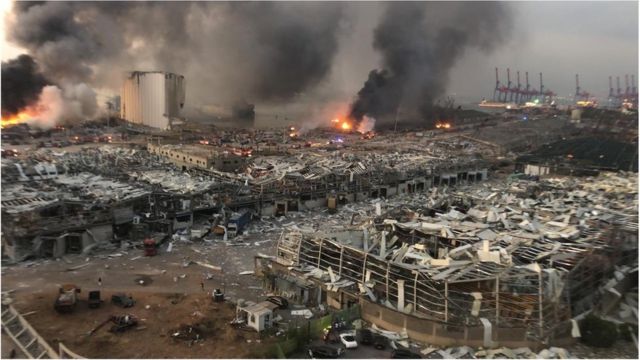
Protests raged following the catastrophic explosion at the Port of Beirut, which killed at least 200 people and injured over 7,000 thousands more and leveled neighborhoods. The explosion was triggered by 2,700 tons of highly explosive ammonium nitrate left unattended in a warehouse for six years and left more than a quarter-million residents homeless. An investigation into what triggered the explosion is under way, and early reports suggest that it was probably a nearby fire.
Protesters stormed three ministries as security forces unleashed tear gas and rubber bullets on demonstrators. Public anger mounted after the blast, focusing on the carelessness that led to one of the worst explosions in Lebanon’s history. The Port of Beirut and customs office is notorious for being one of the most corrupt and lucrative institutions in Lebanon where various factions and politicians,
The mass resignation of Lebanon’s top government officials, including Prime Minister Hassan Diab has failed to quell anger over a crushing economic crisis, record rates of COVID-19 infections and last week’s catastrophic blast. Losses from the blast are estimated to be between $10 billion to $15 billion and has left nearly 300,000 people homeless.
The highly explosive material that leveled the city found its way to the warehouse in 2013 when a ship transporting it stopped at the Lebanese port to pick up more cargo as it was headed to Mozambique. There was a legal dispute over port fees and the shipping company was in debt so the 2,700 tons of ammonium nitrate, was impounded and unloaded; the Russian crew had to stay on board for nearly a year and was then released.
The port’s customs director says he sounded several alarms about the material. Since the blast, some port officials have been placed under house arrest. The New York Times reports an American contractor working with the U.S. Army warned over four years ago about the hazard posed by over 2,700 tons of explosive ammonium nitrate fertilizer left unattended at Beirut’s port. The U.S. State Department reportedly then failed to pass along the warning to U.S. allies.
An official letter circulating online showed the head of the customs department had warned repeatedly over the years that the huge stockpile of ammonium nitrate stored in the port was a danger and had asked judicial officials for a ruling on a way to remove it. In the letter, the customs chief warned of the “dangers if the materials remain where they are, affecting the safety of port employees” and asked a judge for guidance. He said five similar letters were sent in 2014, 2015 and 2016. The letter proposes the material be exported or sold to a Lebanese explosives company. It is not known if there was a response.
Lebanon already was on the brink of collapse amid a severe economic crisis and the coronavirus pandemic. Many have lost their jobs and seen their savings evaporate because of a currency crisis. Food security is a worry, since the country imports nearly all its vital goods and its main port is now devastated. Drone footage showed the blast tore open a silo structure, dumping its contents into the debris. Estimates suggested about 85% of the country’s grain was stored there. Economy and Trade Minister Raoul Nehme said all the wheat was contaminated and unusable.
Read more

Daisy Coleman, a high school sexual assault survivor who was featured in the documentary “Audrie & Daisy,” has died at the age of 23 by suicide. After announcing her death, Daisy’s mother Melinda wrote, “She never recovered from what those boys did to her and it’s just not fair. My baby girl is gone.” Daisy’s sexual assault prompted her to become an advocate for sexual assault victims and she co-founded the non-profit organization SafeBAE, which was aimed at preventing sexual assault in schools.
The Coleman family have suffered tremendous loss over the years far beyond Daisy’s sexual assault at a party in 2012. Melinda’s husband and father to her four children, Dr. Michael Coleman, was killed in a car crash in 2009, then Daisy’s younger brother Tristan died in a car accident at the age of 19 in June 2018 and now the loss of Daisy. The family had originally moved to the small town of Maryville from Albany, Missouri in 2009 after Michael Coleman’s death in hopes of making new and better memories than those the town of Albany held. Instead, they found themselves at the center of a sexual assault case that shocked the nation. Daisy and her friend were invited to a party in January 2012 where they became heavily intoxicated and both were sexually assaulted.
After the assault, Daisy was left intoxicated on her porch in 22-degree weather with no shoes or socks; when her mother found her she had frostbite. Sheriff’s deputies arrested two teens within hours and charged them with felonies. Matthew Barnett, a 17 year old high school senior and the grandson of former state representative Rex Barnett, was arrested for the rape and sexual assault of Coleman, who was 14 at the time. A 15-year-old boy was accused of doing the same to the girl’s 13-year-old friend Paige, and a third boy admitted to recording Barnett’s alleged assault on a cellphone. The video which was never retrieved by law enforcement, was deleted after reportedly being passed around the school.
The identities of alleged sex assault victims are generally not published, but Coleman’s family decided to go public with her identity and accusations. According to the Coleman’s, the torrents of hatred came only days after the case went public and the case divided the community. All four children experienced intense bullying and threats. Melinda Coleman, a veterinarian, lost her job because the case had become too contentious for the local veterinary clinic that was also the subject of threats. Mrs. Coleman says her three sons – Daisy’s brothers – were threatened at school and booed on the field – often by boys they had counted as friends’ just weeks earlier. Daisy became the target of daily bullying in school and was suspended from the cheerleading squad. She was hounded on social media, called a skank and a liar, and urged to kill herself, which she tried to do multiple times.
The relentless bullying prompted the family to move from Maryville back to Albany, Missouri. Shortly after moving, the family’s house in Maryville that they were trying to sell mysteriously burned to the ground 8 months after the moved. The case caught national media attention in October 2013 when the Kansas City Star reported that prosecutor, Robert Rice, dropped the rape charges – citing insufficient evidence. The state at the time appointed a special prosecutor to re-investigate the case, which ended in Barnett pleading guilty to the misdemeanor of charge child endangerment on Jan. 9, 2014. Barnett and his attorney maintain that the sexual encounter was consensual and the fact that two independent investigations have cleared him proves that he didn’t do anything wrong that night except for leaving Coleman outside in the cold. Daisy’s friend Paige’s rapist confessed and was convicted in juvenile court, after Barnett was convicted in adult court on the lesser charge of child endangerment during the 2nd investigation.
Read more
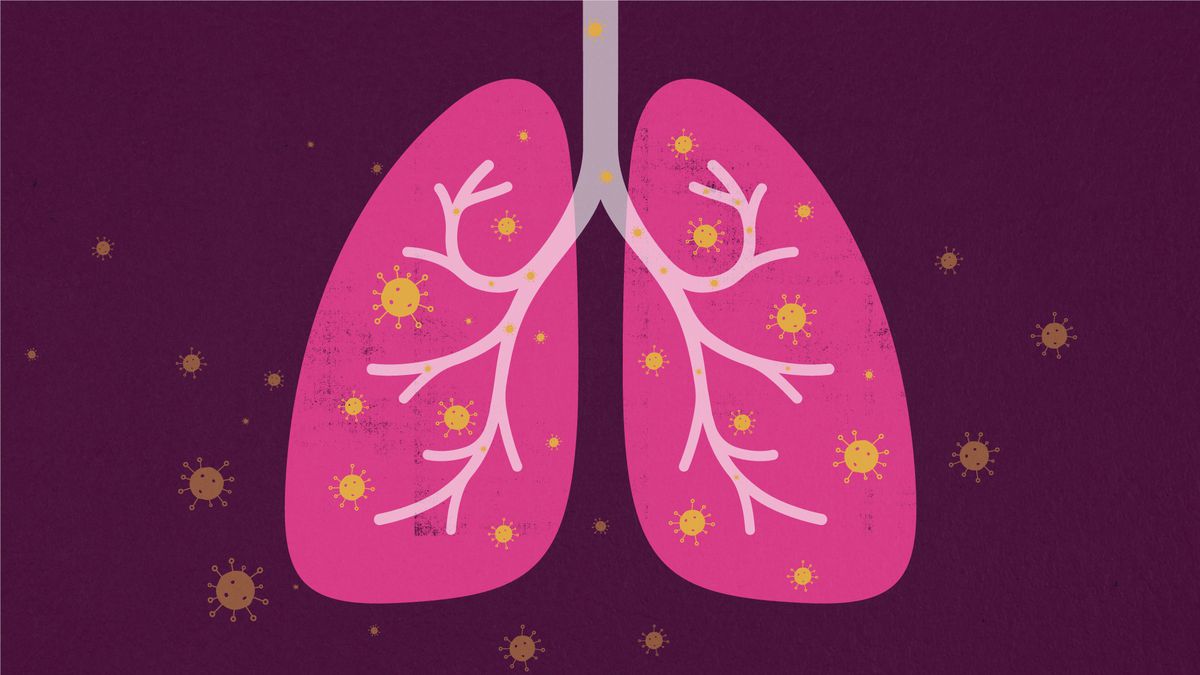
The U.S. death toll from the coronavirus pandemic has topped 156,000 as the number of people hospitalized with COVID-19 soared in July by nearly 50%. There are now over 5 million confirmed cases in the US with California, Florida and Texas each reaching over 500,000 confirmed cases, nearly double the cases reported in New York City, the former leading epicenter of the pandemic in the US. Nearly half of the US confirmed cases have recovered.
The Centers for Disease Control and Prevention (CDC) said that a significant number of COVID-19 patients do not recover quickly, and instead experience ongoing symptoms, such as fatigue and cough. Eight months into the global pandemic, we’re still measuring its effects only in deaths. Non-hospitalized cases are termed ‘mild’ and are largely not followed up. Recovery is implied by discharge from hospital or testing negative for the virus so ongoing ill health in those classed as ‘recovered’ is going largely unmeasured as the focused has mainly been on slowing the infection rate.
Research that follows COVID patients after discharge from hospital is starting but there is still a gap in quantifying and characterizing COVID-related illness in those not hospitalized. The few studies on those who have recovered indicate that previously healthy people with persistent symptoms such as chest heaviness, breathlessness, muscle pains, palpitations and fatigue, which prevent them from resuming work or physical or caring activities, are still classed under the umbrella of ‘mild COVID’. As many as a third of patients who were never sick enough to be hospitalized are not back to their usual health up to three weeks after their diagnosis. Many with long-term symptoms are otherwise young and healthy. Among those surveyed between ages 18 and 34, about 20 percent experienced lasting symptoms.
Among the patients who experienced lasting symptoms in a CDC report, 71 percent reported fatigue, 61 percent had lasting cough, and 61 percent reported ongoing headaches. Although clinicians and researchers have an idea of who is at increased risk of dying from COVID, we don’t know who is more likely to experience prolonged ill health following symptomatic, or even asymptomatic, infection. The CDC still states that preventative measures, such as physical distancing, face masks and frequent hand-washing, continue to be important to slow the spread of COVID-19. They warn that worldwide, millions of those still alive who got ill without being tested or hospitalized are simply not being counted.
The World Health Organization reports cases are now doubling every six weeks. The United States, Brazil, and the United Kingdom have been among the countries hardest hit by the pandemic. The global death toll from the coronavirus has surpassed 700,000, with nearly 19 million confirmed cases, as the pandemic continues to accelerate. During the month of July, more than 8 million people tested positive — almost as many as in the first six months of the pandemic combined. Nearly 12 million of those confirmed cases have recovered.
The top White House coronavirus adviser Deborah Birx has warned the country has entered a new phase in its fight against the pandemic. A new model by the Institute for Health Metrics and Evaluation suggests the U.S. coronavirus death toll is on pace to reach nearly 300,000 by December. The institute projects 66,000 lives could be saved if 95% of people in the United States wear face coverings. The U.S. death toll currently stands at the highest total in the world.
Read more
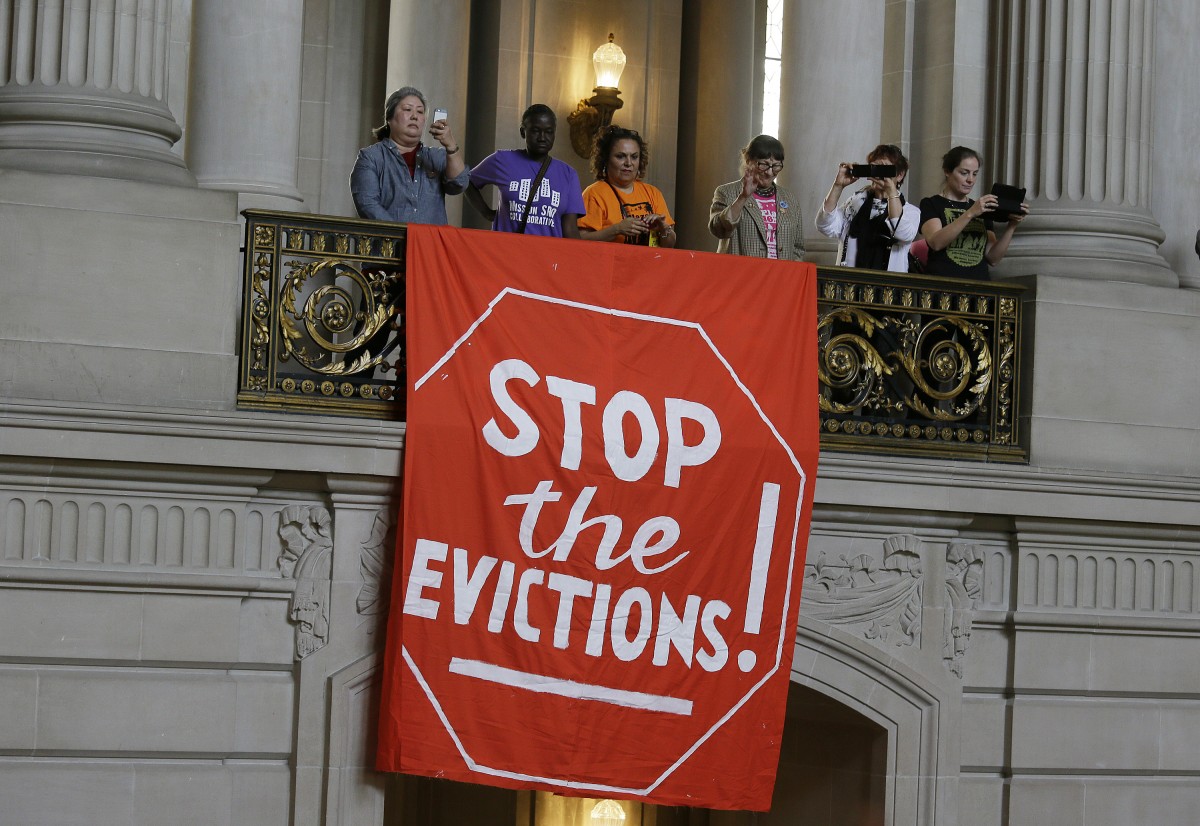
Housing activists across the country are demanding local protections against evictions during the pandemic. Many states have faced criticism for resuming evictions as millions of people are still out of work, many who still have children at home until the school year starts. Many companies have closed their doors indefinitely, taking jobs with them across the US. While some states and counties issued eviction moratoriums, they have expired and thousands face homelessness.
In New Orleans, members of the Renters Rights Assembly surrounded a courthouse that handles evictions, chaining themselves together under a banner reading “Evictions = Death,” and blocking several landlords from entering the building. In Maryland, more than 100 protesters marched through Mayor Tom Barrett’s neighborhood demanding a moratorium on evictions and other forms of housing protections. Beyond standard legal protections, tenants in Maryland have an extra layer of protection against eviction during the pandemic: an executive order from Governor Larry Hogan prohibits eviction so long as the state remains under the state of emergency — and so long as the tenants can prove that their income has been significantly impacted by COVID-19. A second layer of protection, a pause on eviction-related hearings in Maryland courts, expired on July 25.
In Missouri, protests brought proceedings to a halt at a Kansas City eviction court. All spring KC Tenants demanded relief for Kansas City renters left vulnerable by the coronavirus pandemic. They organized — virtually and in person — to shut down the state eviction court proceedings at the Jackson County Courthouse. KC Tenants leaders pledged to keep shutting down the eviction docket until they see action to protect vulnerable residents. “If our so-called leaders continue to lead our tenants into death digitally, online, via phone or even in person, we are going to continue to shut it down until we get what we want,” Mason Andrew Kilpatrick said in front of the courthouse. In St. Louis, protestors gather outside city hall for an “anti-eviction rally” heavily criticizing the court’s decision to restart evictions. “People aren’t working. People don’t have money,” said Sarah Watkins, a rally organizer with Action STL. “People haven’t paid rent since the pandemic began in April. People will be on the street.”
In Milwaukee, a march was organized by the Milwaukee Autonomous Tenants Union to demand help for the many families still out of work due to the coronavirus pandemic. Gov. Tony Evers’ statewide ban on evictions expired two months ago and now, between 150 and 170 people are being evicted from their homes in Milwaukee every week. The state ($25 million), Milwaukee County ($10 million) and City of Milwaukee ($15 million) have poured millions into rental assistance programs, but advocates say vulnerable tenants need added protections. “The rental assistance is good, but it’s not enough,” said protest organizer Robert Penner. “It’s very slow, the systems are backlogged, and they’re over-saturated with cases. A lot of people lose their home before they can even get in contact” with such programs, he said.
Houston Mayor Sylvester Turner announced a second round of $15 million in rental assistance for people financially struggling during the COVID-19 recession Friday, one day after he declined to support a city-mandated eviction grace period for tenants to catch up on past-due payments. More than 3 million Texans have applied for unemployment benefits since the pandemic began. They have also relied on federal benefits from a congressional pandemic relief package, eviction moratoriums and rent assistance programs to remain housed.
Read more

Minneapolis police have issued an arrest warrant for a suspect known as “Umbrella Man” who was filmed smashing the windows of an auto parts dealership on May 27, two days after the police killing of George Floyd. Video of the “Umbrella Man” went viral after protesters in Minneapolis confronted and filmed him while he was in the act of smashing several windows of an AutoZone store. Investigators say the man is a white supremacist who sought to provoke violence against protesters. The term “Umbrella Man” was coined on social media as people guessed at his identity, with some protesters speculating he was actually a member of the police force.
According to a search warrant, the man is associated with the “Aryan Cowboys,” which the Anti-Defamation League lists as a White supremacist prison and street gang. The warrant does not label them as a White supremacist group, but describes them as a “known prison gang out of Minnesota and Kentucky.” A Minneapolis arson investigator wrote in the search warrant affidavit that the man also spray painted the words “free sh*t for everyone zone” on the doors of the AutoZone. Not long after he smashed in the windows, looting began, and a bit later the AutoZone was set on fire, the affidavit said.
“This was the first fire that set off a string of fires and looting throughout the precinct and the rest of the city,” Sgt. Erika Christensen, wrote in the affidavit. “Until the actions of the person your affiant has been calling ‘Umbrella Man,’ the protests had been relatively peaceful. The actions of this person created an atmosphere of hostility and tension. Your affiant believes that this individual’s sole aim was to incite violence.”
Police identified the 32-year-old suspect through a tip last week but the suspect has not been named. Minneapolis police spokesman John Elder told the Associated Press he could not confirm the name of the person involved, but said the investigation remains open and active. The tipster told the investigator that the man was a member of the Hells Angels biker gang who “wanted to sow discord and racial unrest by breaking out the windows and writing what he did on the double red doors.” Police matched him to photos a Muslim woman took when she was harassed during an encounter with the Aryan Cowboy Brotherhood, while eating burgers with her young daughter in Stillwater in June.
The riots spread to other parts of Minneapolis and led to Minneapolis’ 3rd Precinct burning down, and according to Minnesota Gov. Tim Walz, resulted in $500 million in property damage. At least two people died — one a man who was fatally shot at a Minneapolis pawnshop and another man whose burned body was found in the ruins of another pawnshop.
Protests against police brutality and systemic racism continue in cities across the country in the wake of Floyd’s death. The Black Lives Matter movement has drawn tens of millions into the streets to participate in protests taking place every day since May. The protests have been plagued with violence from the start. They continue to push for police reform and an end to systemic inequalities around race. It has led to radical reform in recent months in many states and the faces of those they continue to seek justice for continue to change as more police shootings occur.
Read more
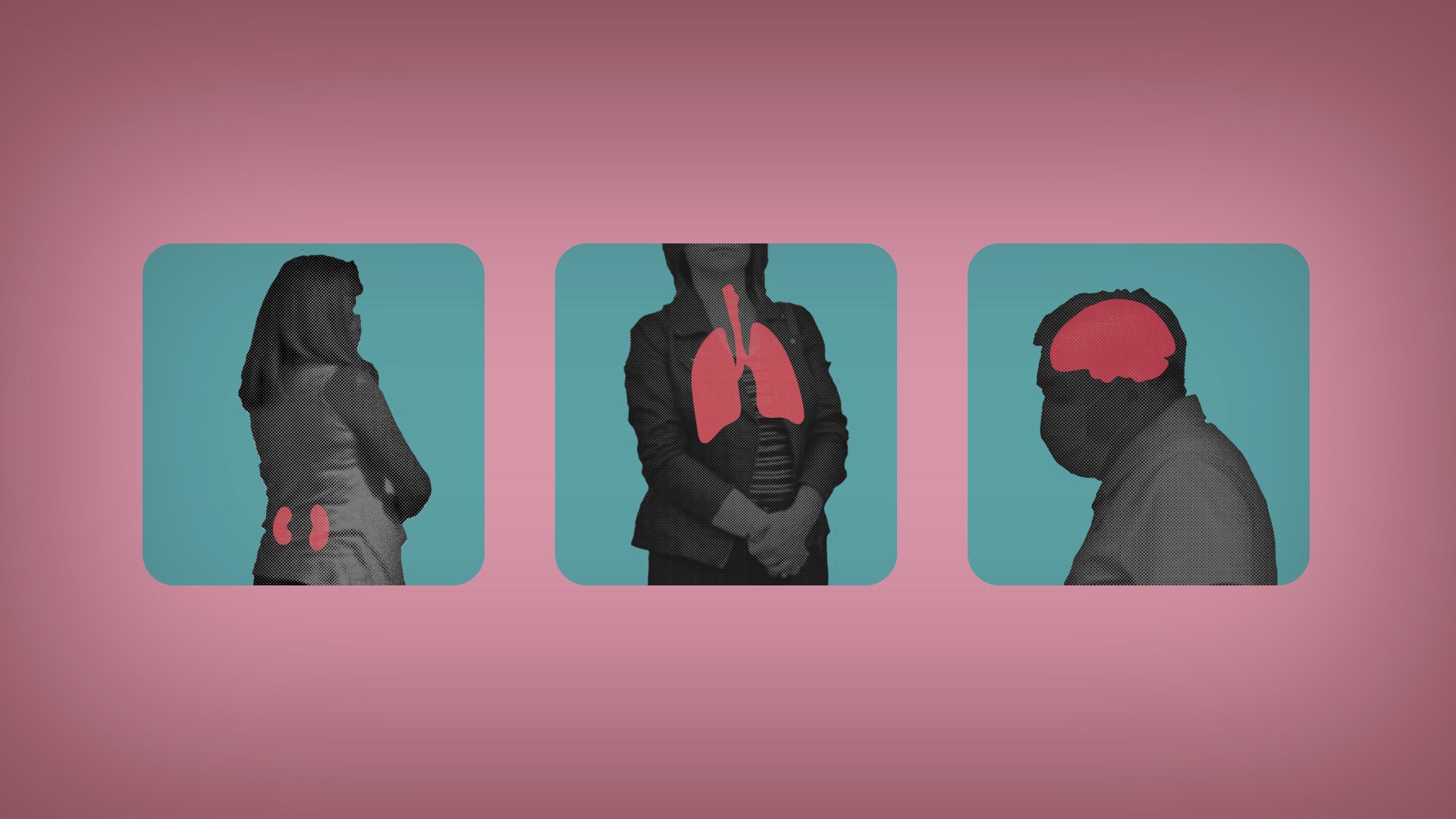
Coronavirus cases continue to surge in much of the United States, where the number of confirmed infections has topped 4.6 million, with nearly 155,000 reported deaths. Florida has surpassed New York to become the state with the second-highest number of infections after California. Almost 66,000 new COVID-19 cases and more than 1,400 deaths from the virus were reported in the U.S. on July 29th, 2020. The toll marks the highest number of deaths from COVID-19 in a single day since May 15. A total of 773 of those deaths were reported by coronavirus hot-spot states Arizona, California, Florida and Texas. Florida reported a state record of 216 coronavirus-related deaths in 24 hours.
In California, healthcare providers say they are again dealing with shortages in testing, which is hitting low-income and immigrant communities the hardest. In Texas, doctors at a rural hospital in Starr County have received critical care guidelines to help them decide which COVID-19 patients the hospital can treat and those whom they send home because they are more likely to die. With the virus continuing to spread out of control, researchers at Johns Hopkins University are calling for a “reset” in the U.S. coronavirus response with universal mask mandates, federal support for expanded testing and a new round of stay-at-home orders in hot spots. And in an open letter published Wednesday, the Association of American Medical Colleges writes, “If the nation does not change its course — and soon — deaths in the United States could be well into the multiple hundreds of thousands.”
Globally, coronavirus cases have now topped 16.2 million and over 650,000 have died since the first cluster of cases were reported in late December 2019 in Wuhan China. Last week, the worldwide caseload jumped by 1 million in just four days. The World Health Organization declared the outbreak the most severe global health emergency the WHO has ever faced.
As European nations scramble to prevent a second wave of infections, Britain has reinstated a 14-day quarantine for travelers coming from Spain. Globally, 11 million people have recovered. For those who survive COVID-19, there’s increasing evidence of long-term organ damage with more studies underway. A new study published by the Journal of the American Medical Association found that of 100 middle-aged patients who recovered from COVID-19, 78 had structural damage to their hearts.
One study group in Italy found that 87% of patients hospitalized for acute COVID-19 were still struggling 2 months later. Data from the COVID Symptom Study, which uses an app into which millions of people in the United States, United Kingdom, and Sweden have entered their symptoms, suggest 10% to 15% of people—including some “mild” cases—don’t quickly recover. But with the crisis just months old, no one knows how far into the future symptoms will endure, and whether COVID-19 will prompt the onset of chronic diseases.
Distinct features of the virus, including its propensity to cause widespread inflammation and blood clotting, could play a role in the assortment of concerns now surfacing. Survivor studies are just starting to probe them. Researchers across the United Kingdom have launched a study that will follow 10,000 survivors for 1 year to start, and up to 25 years. Ultimately, researchers hope to understand the disease’s long shadow and hopefully be able to predict who’s at highest risk of lingering symptoms and learn whether treatments in the acute phase of illness can head them off.
Read more
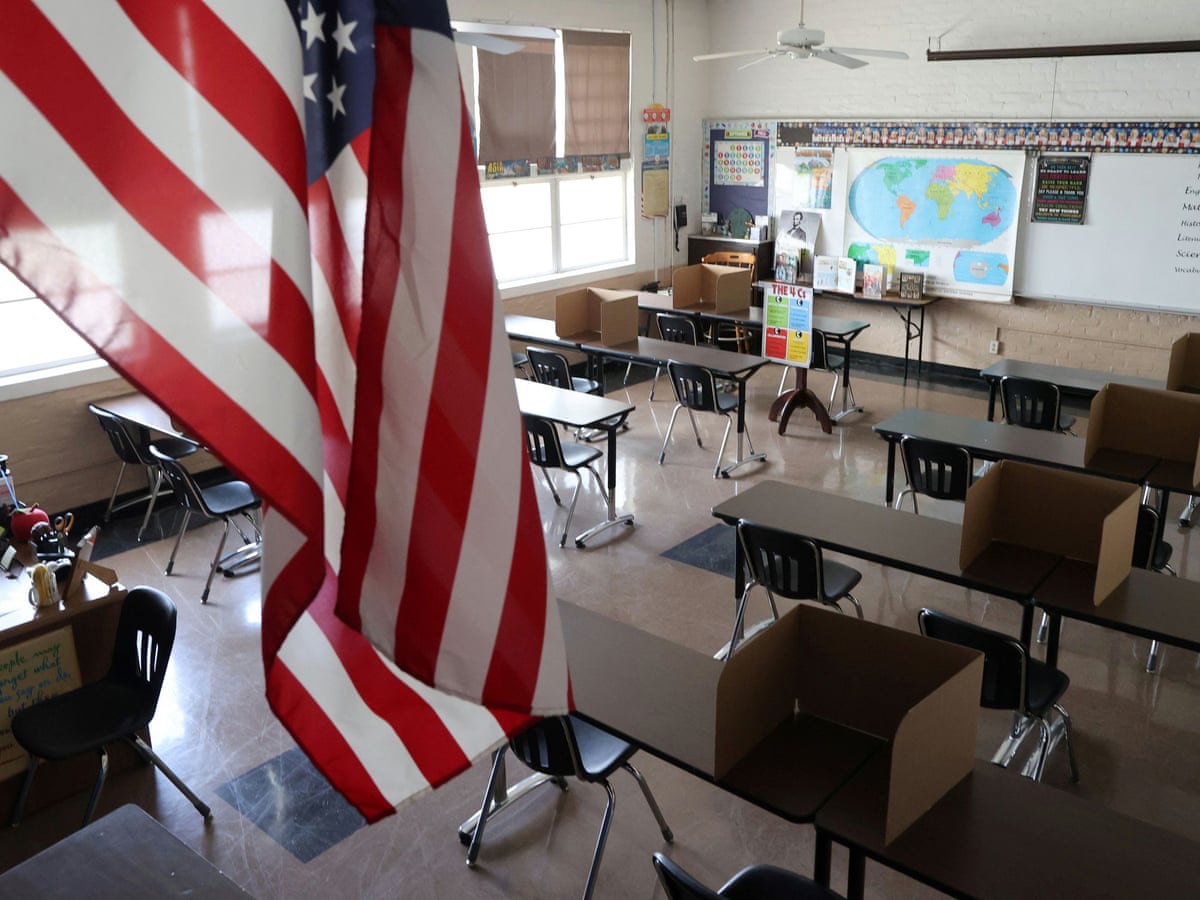
In the US, Covid 19 has killed nearly 141,000 people and infected 3.8 million — both by far the highest numbers in the world. The US has more than a quarter of the deaths and infections in the entire world, yet only a little more than 4% of the population. As cases continue to spike, tensions spike over schools reopening. As schools across the country prepare to reopen for in-classroom learning, teachers are trying to figure out the safest way to resume in-person education. While some schools have given the option for online courses, others are still working on plans to return to the classroom. Lawmakers in Washington are pushing to include a provision in a new coronavirus relief package tying school funding to the reopening of classrooms. Many public health officials fear the reopening of schools could lead to a new surge in COVID-19 deaths and hospitalizations.
Three teachers in Arizona were sharing a classroom for two hours a day teaching online summer school classes during the pandemic. Despite following protocols — social distancing, wearing masks and gloves, and using hand sanitizer — they were all sickened by the coronavirus. Kimberley Chavez Lopez Byrd, 61, died June 26, less than two weeks after she was hospitalized. The two surviving teachers, Jena Martinez and Angela Skillings, said that it is not yet safe for kids, or teachers, to return to the classroom. Martinez said that when they began to do their online schooling from campus, they followed plans in place meant to keep them safe from the virus.
In Arizona, teachers want Governor Doug Ducey to push the start of in-person school to at least early October after the beloved educator died of COVID-19 teaching summer school and statewide hospitalizations and deaths spiral. At stake, Arizona teachers say, is the safety of the state’s 1.1 million public school students and 20,000 teachers. Arizona has been hit hard by the virus this summer as its 7-day average of new cases has gone from 500 at the end of May to more than 3,000 in July, while hospitals’ intensive care capacity, according to most recent data from Arizona Department of Public Health, stood at a nearly 90% percent last week.
Florida has reported more than 10,000 new coronavirus cases for the sixth day in a row. On Monday, Florida’s largest teachers’ union sued Republican Governor Ron DeSantis to block his order requiring all schools to reopen next month despite the growing pandemic, which has killed nearly 5,200 Floridians.
Meanwhile, Missouri Governor Mike Parson is insisting students go to school despite the risk of the virus. He received backlash after giving an interview where he said “These kids have got to get back to school. They’re at the lowest risk possible. And if they do get COVID-19, which they will — and they will when they go to school — they’re not going to the hospitals. They’re not going to have to sit in doctor’s offices. They’re going to go home and they’re going to get over it. We gotta move on,” he continued. “We can’t just let this thing stop us in our tracks.” Many criticized his statement calling it “stunning ignorance” saying the virus “doesn’t stop with our children. The teachers, bus drivers, janitors, food service workers, parents, grandparents and neighbors who our children see every day are susceptible to this virus, too. We need a plan that keeps all Missouri families safe.” Missouri has 47,519 confirmed cases and 1,268 deaths.
It is still unclear how frequently children transmit the virus to others. Some data suggests children are less susceptible to contracting the virus and spreading it to adults. According to the CDC, 175,374 cases have been confirmed in kids ages 17 and under, accounting for approximately 6% of all confirmed cases. A large study recently shared out of South Korea found children between the ages of 10 and 19 can spread the virus as much as adults do, while children younger than the age of 10 transmit the virus to others less often than adults.
Read more
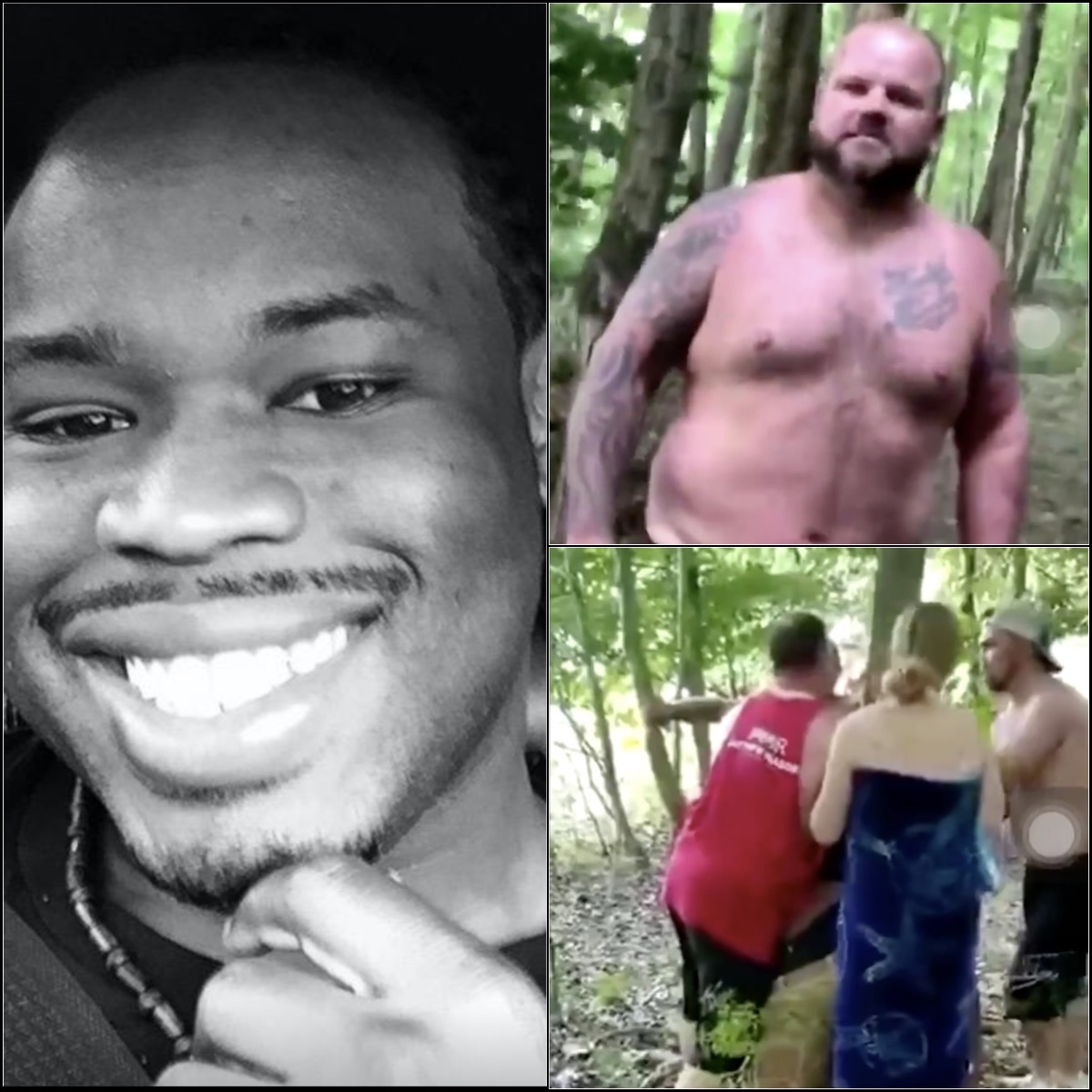
Two Indiana men were charged in an alleged assault against a Black man who was seen in a viral video being held against his will in the woods near an Indiana lake on the Fourth of July. Sean Purdy and Jerry Cox are charged with various crimes, including confinement and battery against 36-year-old Vauhxx Booker. Purdy and Cox were part of a group of five men who pinned Booker to a tree, beat him and threatened to lynch him. Booker was able to escape them after passersby intervened. A portion of the assault was captured on video by the strangers who intervened.
Monroe County Prosecutor Erika Oliphant has filed two active warrants for the two men and says Booker will face no charges. Purdy is charged with criminal confinement, battery resulting in injury and intimidation, all felonies. Cox is charged with aiding or causing criminal confinement, felony battery resulting in injury, intimidation and two misdemeanor counts of battery.
Booker, a member of the Monroe County Human Rights Commission, posted his account of the July 4 incident along with video to his Facebook account, writing, “I don’t want to recount this, but I was almost the victim of an attempted lynching.” He went on: “On July 4th evening others and me were victims of what I would describe as a hate crime. I was attacked by five white men with Confederate flags who literally threatened to lynch me in front of numerous witnesses.”
Booker said he and his friends were visiting a public beach on Lake Monroe outside Bloomington to join a gathering when a group of white men said they were on private property and began following them. Some of the men became belligerent, he said. When he approached “sober seeming group members” to “see if we could smooth things over a bit,” the confrontation escalated. Video posted to social media shows a group of white men holding Booker to a tree as his friends plead with them to release him. In the video, one man shouts at the camera, “You happy about this, you nappy-headed bitch? You and your five white friends?” As Booker’s friends leave, one of the men follows, shouting, “Those Black boys want to start it all.”
Booker says during the attack there were shouts of “get a noose” and “white power,” although those are not heard on the video. Booker believes he’s alive because strangers stopped to help and film the altercation. “The reason why I’m here today is simply because these folks, they didn’t just stop and watch and film my execution,” Booker said in an interview with NPR’s Mary Louise Kelly. “They became involved. They became active participants. They put themselves in danger when they stepped forward for me.”
Last week, the FBI confirmed it was investigating the incident as a potential hate crime, and Indiana Gov. Eric Holcomb called it “beyond disturbing.” “The brief video clip that I viewed with my own two eyes was beyond disturbing and that’s why it’s very important that the DNR … complete their investigation sooner rather than later.” Bloomington
Mayor Greg Hamilton, who said he has known Booker personally for at least five years, said his city had work to do. “I don’t know what would have happened in the woods around Lake Monroe if there hadn’t been other individuals there and if there hadn’t been a video taken,” Hamilton told Yahoo News. “It’s incredibly important that we as a country, and then me and my community, that we make clear that has no place in our community, and we want to root it out.”
Read more

More than a year after launching an internal investigation into 138 employees for “inappropriate social media activity,” Customs and Border Protection — the parent agency of the Border Patrol — has removed four employees, suspended 38 without pay and disciplined an additional 27 with reprimands or counseling. Investigators from Customs and Border Protection‘s Office of Professional Responsibility determined that 63 of the cases — roughly half — were “unsubstantiated.” Six cases remain open, and the Homeland Security Department‘s inspector general is also investigating.
The office began looking into more than 60 current employees and eight former staff following reports of a secret Facebook group in which members used dehumanizing and derogatory language regarding Latina members of Congress and deceased migrants. The existence of the group, known as “I’m 10-15,” the code used by Border Patrol for migrants in custody, at one point had 9,500 members and was created in August 2016. The probe, which is not criminal, ultimately doubled the number of individuals under investigation, and included several additional private social media groups.
Most of the cases deemed unsubstantiated involved personnel who reported themselves or others as part of the groups and provided information to investigators, but whose history showed they’d never posted or been active in them. At the start of the investigation, Matthew Klein, assistant commissioner of the agency’s Office of Professional Responsibility, emphasized that the privacy of the social media groups does not protect current or former employees from disciplinary action.
Members of the secret Facebook group for current and former Border Patrol agents joked about the deaths of migrants and discussed throwing burritos at Latino members of Congress visiting a detention facility while referring to them as scum buckets. In one post, a photoshopped image depicted Congressmember Alexandria Ocasio-Cortez being sexually assaulted by President Trump. In another thread, members of the group made fun of a video of an immigrant man trying to carry a child through a raging river in a plastic bag. One group member commented, “At least it’s already in a trash bag.”
In one exchange, group members responded with indifference and wisecracks to the post of a news story about a 16-year-old Guatemalan migrant who died in May while in custody at a Border Patrol station in Weslaco, Texas. One member posted a GIF of Elmo with the quote, “Oh well.” Another responded with an image and the words “If he dies, he dies.”
Rep. Veronica Escobar, who said on Twitter she was “one of the Latina members of Congress targeted by the hateful attacks,” but she had not received information about the investigation from Customs and Border Protection. Rep. Joaquín Castro, the head of the Congressional Hispanic Caucus, reviewed the Facebook discussions and was incensed. “It confirms some of the worst criticisms of Customs and Border Protection,” said Castro. “These are clearly agents who are desensitized to the point of being dangerous to migrants and their co-workers.” He added that the agents who made the vulgar comments “don’t deserve to wear any uniform representing the United States of America.”
Read more












